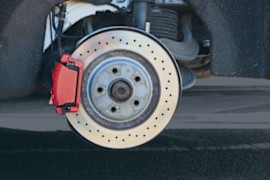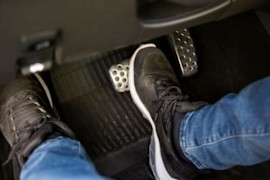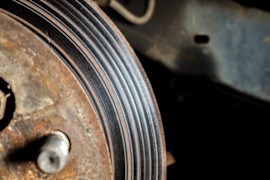{
"lazyNodes": false,
"abFitnotesFlag": false,
"abCrawlReviews": false,
"productOptionsCookie": false,
"orderDelayFlag": false,
"skipSessionCookie": false,
"covidMessage": false,
"fullTitleCookie": false,
"nrLoggerCookie": false,
"checkoutReviewCookie": false,
"productOptionSeqCookie": false,
"maintenanceFlag": false,
"bufferETACookie": false,
"multiShippingDiscountFlag": false,
"newFitmentFlag": false,
"surveyOptInFlag": false,
"crossSellFlag": false,
"skuMappingFlag": false,
"paySplitCookie": false,
"callDisableFlag": false,
"zipPaymentFlag": "u",
"hassleFreeReturn": false,
"lifetimeReplacement": false,
"cpn_off": false
}Mercedes Benz 190D Brake Discs
Shop Catalog
![]() WARNING: This product can expose you to chemical which is known to the State of California to cause cancer and birth defects or other reproductive harm. For more information go to www.P65Warnings.ca.gov.
WARNING: This product can expose you to chemical which is known to the State of California to cause cancer and birth defects or other reproductive harm. For more information go to www.P65Warnings.ca.gov.
![]() WARNING: This product can expose you to chemical which is known to the State of California to cause cancer and birth defects or other reproductive harm. For more information go to www.P65Warnings.ca.gov.
WARNING: This product can expose you to chemical which is known to the State of California to cause cancer and birth defects or other reproductive harm. For more information go to www.P65Warnings.ca.gov.
![]() WARNING: This product can expose you to chemical which is known to the State of California to cause cancer and birth defects or other reproductive harm. For more information go to www.P65Warnings.ca.gov.
WARNING: This product can expose you to chemical which is known to the State of California to cause cancer and birth defects or other reproductive harm. For more information go to www.P65Warnings.ca.gov.
![]() WARNING: This product can expose you to chemical which is known to the State of California to cause cancer and birth defects or other reproductive harm. For more information go to www.P65Warnings.ca.gov.
WARNING: This product can expose you to chemical which is known to the State of California to cause cancer and birth defects or other reproductive harm. For more information go to www.P65Warnings.ca.gov.
![]() WARNING: This product can expose you to chemical which is known to the State of California to cause cancer and birth defects or other reproductive harm. For more information go to www.P65Warnings.ca.gov.
WARNING: This product can expose you to chemical which is known to the State of California to cause cancer and birth defects or other reproductive harm. For more information go to www.P65Warnings.ca.gov.
![]() WARNING: This product can expose you to chemical which is known to the State of California to cause cancer and birth defects or other reproductive harm. For more information go to www.P65Warnings.ca.gov.
WARNING: This product can expose you to chemical which is known to the State of California to cause cancer and birth defects or other reproductive harm. For more information go to www.P65Warnings.ca.gov.
![]() WARNING: This product can expose you to chemical which is known to the State of California to cause cancer and birth defects or other reproductive harm. For more information go to www.P65Warnings.ca.gov.
WARNING: This product can expose you to chemical which is known to the State of California to cause cancer and birth defects or other reproductive harm. For more information go to www.P65Warnings.ca.gov.
![]() WARNING: This product can expose you to chemical which is known to the State of California to cause cancer and birth defects or other reproductive harm. For more information go to www.P65Warnings.ca.gov.
WARNING: This product can expose you to chemical which is known to the State of California to cause cancer and birth defects or other reproductive harm. For more information go to www.P65Warnings.ca.gov.
![]() WARNING: This product can expose you to chemical which is known to the State of California to cause cancer and birth defects or other reproductive harm. For more information go to www.P65Warnings.ca.gov.
WARNING: This product can expose you to chemical which is known to the State of California to cause cancer and birth defects or other reproductive harm. For more information go to www.P65Warnings.ca.gov.
![]() WARNING: This product can expose you to chemical which is known to the State of California to cause cancer and birth defects or other reproductive harm. For more information go to www.P65Warnings.ca.gov.
WARNING: This product can expose you to chemical which is known to the State of California to cause cancer and birth defects or other reproductive harm. For more information go to www.P65Warnings.ca.gov.
![]() WARNING: This product can expose you to chemical which is known to the State of California to cause cancer and birth defects or other reproductive harm. For more information go to www.P65Warnings.ca.gov.
WARNING: This product can expose you to chemical which is known to the State of California to cause cancer and birth defects or other reproductive harm. For more information go to www.P65Warnings.ca.gov.
![]() WARNING: This product can expose you to chemical which is known to the State of California to cause cancer and birth defects or other reproductive harm. For more information go to www.P65Warnings.ca.gov.
WARNING: This product can expose you to chemical which is known to the State of California to cause cancer and birth defects or other reproductive harm. For more information go to www.P65Warnings.ca.gov.
![]() WARNING: This product can expose you to chemical which is known to the State of California to cause cancer and birth defects or other reproductive harm. For more information go to www.P65Warnings.ca.gov.
WARNING: This product can expose you to chemical which is known to the State of California to cause cancer and birth defects or other reproductive harm. For more information go to www.P65Warnings.ca.gov.
![]() WARNING: This product can expose you to chemical which is known to the State of California to cause cancer and birth defects or other reproductive harm. For more information go to www.P65Warnings.ca.gov.
WARNING: This product can expose you to chemical which is known to the State of California to cause cancer and birth defects or other reproductive harm. For more information go to www.P65Warnings.ca.gov.
![]() WARNING: This product can expose you to chemical which is known to the State of California to cause cancer and birth defects or other reproductive harm. For more information go to www.P65Warnings.ca.gov.
WARNING: This product can expose you to chemical which is known to the State of California to cause cancer and birth defects or other reproductive harm. For more information go to www.P65Warnings.ca.gov.
Popular Products

Customer Guides
Top Mercedes Benz 190D Brake Disc Problems and the Reasons behind Them
You cannot fully count on the top-notch performance of your Mercedes Benz 190D's braking system without highly reliable brake discs. Usually made of steel or cast iron, your vehicle's brake discs work hand-in-hand with the brake pads to provide superior stopping power that completes your ultimate driving experience. With this very demanding task, your Mercedes Benz 190D brake discs are expected to deteriorate at some point. Their natural wear and tear will cause some braking problems, which can lead to fatal road accidents if not dealt with properly. To help you out, here are a couple of ways to troubleshoot these braking problems before they go out of hand:
Excessive shaking
One of the best ways to troubleshoot brake disc problems is to watch out for too much shaking or vibration every time you hit the brakes. If the steering wheel shakes or vibrates excessively when you step on the brake pedal, your Mercedes Benz 190D brake disc is probably in trouble. This braking problem can result from damaged or heavily corroded brake discs, and it can only be solved by replacing your vehicle's stock with new ones.
Noises from the brake assembly
Overheated or worn-out discs can cause the brake assembly to produce unusual and annoying sounds like grinding, scraping, squealing, and clunking. These noises can be heard when damaged brake discs come in contact with the brake pads as they spin. Proper brake assembly maintenance is the best way to prevent this problem, but if your Mercedes Benz 190D is already experiencing this, brake disc replacement is your only option.
Warping and scoring
Warping and scoring are the most common forms of physical damage that can be acquired by your Mercedes Benz 190D brake discs. Steering wheel vibrations and brake assembly noise indicate warped rotors. Scoring, on the other hand, can be determined through visual inspection of the brake discs. You can also check for scoring by running your finger over the brake discs' surface, but you need to make sure that the brakes are already cool before you do it. Both warping and scoring can be caused by worn-out brake pads, sudden temperature changes, and accumulation of road dirt and debris within the brake assembly. Scoring can still be solved by brake disc resurfacing, but warped rotors require replacement.
Other troubleshooting tips
Aside from what were already mentioned, you also need to watch out for brake juddering and extreme pulsating of the brake pedal. These two problems are caused by deformed brake discs, and they can only be solved by changing your damaged stock. In addition, you may want to check for worn-out wheel hubs and brake pads because they are also indicators of bad brake discs.
Faulty brake discs are among the most common problems of your Mercedes Benz 190D's braking system. Apart from causing braking problems like excessive noise and vibrations, broken or heavily corroded brake discs can adversely affect your vehicle's braking power, causing accidents that are harmful not only to your elegant Mercedes vehicle but also to your and your passengers' safety. If you want to spare yourself from all these hassles, just follow these easy but helpful maintenance tips for your Mercedes Benz 190D brake discs:
Clean the brake discs.
Because of its location, the brake assembly is a bit tough to clean. However, if sparing a considerable amount of your time and getting yourself dirty will extend the brake discs' life span for a couple of months more, then cleaning your stock regularly is a sacrifice you must willingly make. Your Mercedes Benz 190D brake discs can be cleaned using a commercial brake disc cleaner, which can be bought from your favorite car accessories store. Since removing the tires is necessary to have better access to the brake discs, you also need to prepare tire removal tools like floor jack, jack stands, tire iron, and lug wrench.
Resurface the brake discs.
Your vehicle's brake discs may score overtime. Brake disc scoring is often caused by rust accumulation, corrosion, or faulty brake pads. Usually, car owners solve this problem by replacing their damaged stock with new ones. However, with the help of resurfacing technology, car owners now have the option to "recycle" their damaged brake discs. Resurfacing involves machining off the rust-infested parts of the brake discs. This will flatten and smoothen out the discs' surface, making the discs as good as new. Experts recommend having your discs resurfaced every time you change the brake pads.
Follow the proper brake pad bedding procedure.
Brake pad bedding or break-in is usually done when new brake pads are installed. This procedure aims to transfer a thin and even layer of brake pad material on the brake discs' surface, which promotes better interaction between the brake pads and the brake discs. If done correctly, brake pad bedding can reduce noise and vibrations when braking. It also maximizes the potential and extends the life spans of the brake pads and the brake discs. So if you want all these benefits, you need to make sure that your new pads undergo the correct brake-in procedure. Bedding instructions vary from one brake pad material to another. For best results, consult your new brake pads' manual.
























